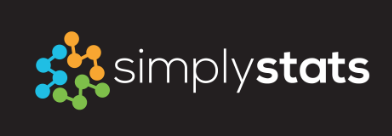16 Nov 2011
OK Cupid is an online dating site that has grown its visibility in part through a pretty awesome blog called OK Trends, where they have analyzed their online dating data to, for example, show you what kind of profile picture works best. Now, they have compiled data from their personality survey and made it available online through Infochimps. We have talked about Infochimps before, it is basically a site for distributing/selling data. Unfortunately, the OK Cupid data costs $1000. I can think of some cool analyses we could do with this data, but unfortunately the price is a little steep for me. Anybody got a grand they want to give me to buy some data?
Related Posts: Jeff on APIs, Jeff on Data sources, Roger on Private health insurers to release data
15 Nov 2011
In honor of us passing the 100 post milestone, I’ve collected a few of our more interesting posts from the past 3 months for those who have not been avid followers from Day 1. Enjoy!
14 Nov 2011
As a follow up to my previous post on expected salaries by majors I want to share the following graph:

So why is the cost of higher education going up at a faster rate than most everything else? Economists please correct me if I’m wrong, but it must be that demand grew right? Universities are non-profits so they didn’t necessarily have to respond by increasing offers. But apparently they did. So if the proportion of the population going to college grew, why is there a shortage of STEM majors? I think it’s because the proportion of the population that can complete such a degree has not changed since 1985 and most of those people were already going to college. If this is right, then it implies that to make more offers, the universities had to grow majors with higher graduation rates. The graph below (taken from here) seems to confirm this:

Unfortunately, in 1985 there was no dearth of psychologists, visual and performing artists, and journalists. So we should not be surprised that the increase in their numbers resulted in graduates from these fields having a harder time finding employment (see bottom of this table). Meanwhile, the US has 2 million job openingsthat can’t be filled, many in vocational careers. So why aren’t more students opting for technical training with good job prospects?In thisNYTimes article, Motoko Rich explains that
In European countries like Germany, Denmark and Switzerland, vocational programs have long been viable choices for a significant portion of teenagers. Yet in the United States, technical courses have often been viewed as the ugly stepchildren of education, backwaters for underachieving or difficult students.
It’s hard not to think that universities have benefited from the social stigma associated with vocational degrees. In any case, as I said in mymy previous post, I am not interested in telling people what to study, but universities should show students the data.
11 Nov 2011
Jeff Leek and colleagues just published an article in PLoS ONE on the differences between anonymous (closed) and non-anonymous (open) peer review of research articles. They developed a “peer review game” as a model system to track authors’ and reviewers’ behavior over time under open and closed systems.
Under the open system, it was possible for authors to see who was reviewing their work. They found that under the open system authors and reviewers tended to cooperate by reviewing each others’ work. Interestingly, they say
It was not immediately clear that cooperation between referees and authors would increase reviewing accuracy. Intuitively, one might expect that players who cooperate would always accept each others solutions - regardless of whether they were correct. However, we observed that when a submitter and reviewer acted cooperatively, reviewing accuracy actually increased by 11%.
 Follow us on twitter
Follow us on twitter 
